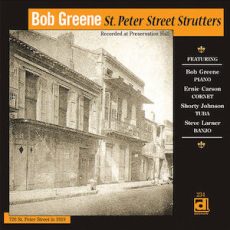
Daily Dose Of Jazz…
Bob Greene was born on September 4, 1922 in New York City, New York. He was active early in his career in Dixieland jazz revival groups, working with Sidney De Paris, Baby Dodds, Conrad Janis, and Johnny Wiggs.
Leaving music for a period, he got a degree from Columbia University and worked in radio and speechwriting, including for Lyndon Johnson and Robert F. Kennedy. After Robert Kennedy’s assassination, he quit speechwriting and returned to jazz in the late 1960s again, working with Zutty Singleton. Focusing on music full-time, Bob worked in the early 1970s with Don Ewell, Albert Nicholas, and the Peruna Jazz Band.
He put together a traveling ensemble which paid tribute to the music of Jelly Roll Morton. They toured worldwide, recorded several albums and among his sidemen in this setting were Danny Barker, Tommy Benford, Herb Hall, Milt Hinton, and Johnny Williams.
The nephew of Paul Blum, a former intelligence officer, he spent time writing his uncle’s biography, which was published in 1998. Pianist and bandleader Bob Greene transitioned on October 13, 2013 in Amagansett, New York.
More Posts: bandleader,history,instrumental,jazz,music,piano
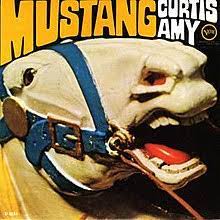
Daily Dose Of Jazz…
Leroy “Hog” Cooper ws born on August 31, 1928 in Dallas, Texas and by age twenty, fom 1948 to 1951, he toured with the Ernie Fields territory band. A childhood friend of David Fathead Newman, in 1954 the two played together in the sax section backing Lowell Fulson on his first single for Chess Records, Reconsider Baby.
In 1957, upon the Newman recommendation of Cooper to Ray Charles, who joined Charles’ band the same summer as bassist Edgar Willis, both musicians stayed on with Charles for some twenty years.
Leroy also played, recorded and/or toured with Lightnin’ Hopkins, Clarence “Gatemouth” Brown, The Righteous Brothers, Dr. John, Del Shannon, Bobby Short, and Joe Cocker.
Performing locally in Orlando, Florida with the Smokin’ Torpedoes & Josh Miller Blues Band till the time of his death, baritone saxophonist Leroy Cooper, who was affectionately known as Hog in the industry, transitioned on January 15, 2009.
Bestow upon an inquiring mind a dose of a Dallas saxophonist to motivate the perusal of the genius of jazz musicians worldwide whose gifts contribute to the canon…
More Posts: history,instrumental,jazz,music,saxophone
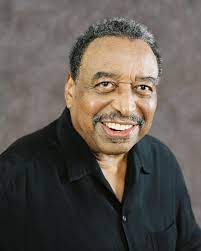
Three Wishes
When the curious Pannonica posed the question of three wishes to Chico Hamilton he came back with the following answers:
- “Well, I think the first wish would be I want everything wonderful for my wife and my family , because they have sacrificed.”
- “I don’t know. I wish that this God-given talent I have ~ someone will get some good out of it..”
- “I wish I never lose my sense of humor.”
*Excerpt from Three Wishes: An Intimate Look at Jazz Greats ~ Compiled and Photographed by Pannonica de Koenigswarter
More Posts: baroness,drums,history,instrumental,jazz,music,pannonica,three,wishes
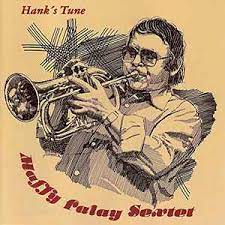
Daily Dose Of Jazz…
Muvaffak “Maffy” Falay was born on August 30, 1930 in Karşıyaka, Turkey and moved later with his family to Kuşadası,Turkey. In 1942 he heard that a teacher would be arriving in Kuşadası to establish a municipal band team and ast the age of 12 started his career in music in Kuşadası Municipality Band. He learned to read music and to play the trumpet with excellent skills with 5 hours of practice per day in just 3 months.
He studied trumpet and piano in Ankara Conservatory and in 1960, he joined the radio orchestra of Kurt Edelhagen in Cologne, Germany. After departing from Edelhagen he toured Europe with the Kenny Clarke/Francy Boland Big Band and played on six of the band’s albums.
Maffy’s next gigs were playing in orchestras led by Benny Bailey, Åke Persson, Phil Woods, Sixten Eriksson and Quincy Jones. By 1965 he decided to move to Sweden where he played for the radio jazz orchestra, and toured around the Americas at the same time. 1970 saw him playing in the Dizzy Gillespie Reunion Orchestra, and he also played with Dexter Gordon, Stan Getz, and Elvin Jones.
In 1971, he formed the band Sevda, featuring Bernt Rosengren, Okay Temiz, Gunnar Bergsten, Ove Gustafsson and Salih Baysal. In 2005, he received the Lifetime Achievement Award at the Istanbul Jazz Festival. Trumpeter Maffy Falay transitioned on February 22, 2022 at the age of 91.
Bestow upon an inquiring mind a dose of a Karşıyaka trumpeter to motivate the perusal of the genius of jazz musicians worldwide whose gifts contribute to the canon…
More Posts: bandleader,history,instrumental,jazz,music,trumpet
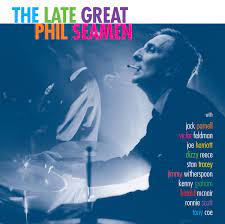
Daily Dose Of Jazz…
Philip William Seamen was born on August 28, 1926 in Burton upon Trent, Staffordshire, England. He began playing drums at the age of six, turning professional at the age of 18 by joining Nat Gonella and his Georgians in 1944. At 20 he spent a year with Gordon Homer Big Band at the Coronation Ballroom in Ramsgate. He joined the Tommy Sampson Orchestra in 1948 and by 1949, Seamen and tenor saxophonist Danny Moss formed a bebop quintet from within the ranks and was featured on a radio broadcast by the orchestra.
He then went on to play in the Joe Loss Orchestra for about 14 months before taking the top job with Jack Parnell from 1951 until midway 1954. Seamen, being much sought after during the 1950 played in Kenny Graham’s Afro-Cubists projects from 1952 to 1958, from 1954 onwards with the Joe Harriott Quartet, the Ronnie Scott Orchestra and Sextet. He was recruited opn countless sessions as well to perform with Dizzy Reece, Victor Feldman, Jimmy Deuchar, Kenny Baker, Vic Ash, Don Rendell, Stan Tracey, Laurie Johnson, Big Bill Broonzy and Josh White, to name a few.
In 1957 Phil was on his way to America with the Ronnie Scott Sextet as part of a Musicians’ Union exchange tour deal. Unfortunately the Southhampton custom officers found him in possession of drugs, killing his lifelong dream of visiting the States. In 1958, the West End production of West Side Story opened with him after Leonard Bernstein reputedly specifically asked for him, so the producers hired him.
During the first half of the 1960s, he worked often with Tubby Hayes, Joe Harriott, played a couple of nights with Dexter Gordon at Ronnie Scott’s, and recorded with Carmen McRae. In 1964 he played R&B with Alexis Korner and Georgie Fame.
He started teaching in 1962, one of his pupils being Ginger Baker, who went on to influence a whole generation of rock drummers. However, his addiction to alcohol, heroin and other drugs hampered his health and career as many bandleaders refused to hire him with the exception of Freddie Hubbard in 1964 and Roland Kirk in 1967 with a UK tour. On October 13, 1972 drummer Phil Seaman transitioned in his sleep at his home in Old Paradise Street Lambeth, South London, at the age of 46.
Bestow upon an inquiring mind a dose of a Burton upon Trent drummer to motivate the perusal of the genius of jazz musicians worldwide whose gifts contribute to the canon…



